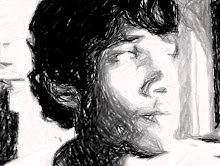Tropical forest floras are most dependent on large-vertebrate dispersers, with as many as 97% of all tree, woody liana and epiphyte species bearing fruits and seeds that are morphologically adapted to endozoochorous (passing through the gut of an animal) dispersal (Peres and Roosmalen 2003). Successful seedling recruitment in many flowering plants depends on seed dispersal services provided by large-bodied frugivores (Howe and Smallwood 1982), while virtually all seeds falling underneath the parent’s canopy succumb to density-dependent mortality—caused by fungal attack, other pathogens, and vertebrate and invertebrate seed predators (see review in Carson et al. 2008). A growing number of phytodemographic studies have examined the effects of large-vertebrate removal. Studies examining seedling recruitment under different levels of hunting pressure (or disperser abundance) reveal very different outcomes. At the community level, seedling density in overhunted forests can be indistinguishable, greater, or less than that in the undisturbed forests (Dirzo and Miranda 1991; Chapman and Onderdonk 1998; Wright et al. 2000), but the consequences of increased hunting pressure to plant regeneration depends on the patterns of depletion across different prey species. In persistently hunted Amazonian forests, where large-bodied primates are driven to local extinction or severely reduced in numbers (Peres and Palacios 2007), the probability of effective dispersal of largeseeded endozoochorous plants can decline by over 60% compared to non-hunted forests (Peres and Roosmalen 2003). Consequently, plant species with seeds dispersed by vulnerable game species are less abundant where hunters are active, whereas species with seeds dispersed by abiotic means or by small frugivores ignored by hunters are more abundant in the seedling and sapling layers (Nuñez-Iturri and Howe 2007; Wright et al. 2007; Terborgh et al. 2008).
However, the importance of dispersal- limitation in the absence of large frugivores depends on the degree to which their seed dispersal services are redundant to any given plant species (Peres and Roosmalen 2003). Furthermore, local extinction events in large-bodied species are rarely compensated by smaller species in terms of their population density, biomass, diet, and seed handling outcomes (Peres and Dolman 2000). Large vertebrates targeted by hunters often have a disproportionate impact on community structure and operate as “ecosystem engineers” (Jones et al. 1994; Wright and Jones 2006), either performing a key landscaping role in terms of structural habitat disturbance, or as mega-herbivores that maintain the structure and relative abundance of plant communities. For example, elephants exert a major role in modifying vegetation structure and composition as herbivores, seed dispersers, and agents of mortality for many small trees (Cristoffer and Peres 2003). Two similar forests with or without elephants show different succession and regeneration pathways, as shown by long-term studies in Uganda (Sheil and Salim 2004). Overharvesting of several other species holding a keystone landscaping role can lead to pervasive changes in the structure and function of ecosystems. For example, the decimation of North American beaver populations by pelt hunters following the arrival of Europeans profoundly altered the hydrology, channel geomorphology, biogeochemical pathways and community productivity of riparian habitats (Naiman et al. 1986). Mammal overhunting triggers at least two additional potential cascades: the secondary extirpation of dependent taxa and the subsequent decline of ecological processes mediated by associated species. For instance, overhunting can severely disrupt key ecosystem processes including nutrient recycling and secondary seed dispersal exerted by relatively intact assemblages of dung beetles (Coleoptera: Scarabaeinae) and other coprophagous invertebrates that depend on large mammals for adult and larval food resources (Nichols et al. 2009).


1 comments:
Psychoneuroxy?? Good stuff ! I found new work thanks to Psychoneuroxy.
Post a Comment